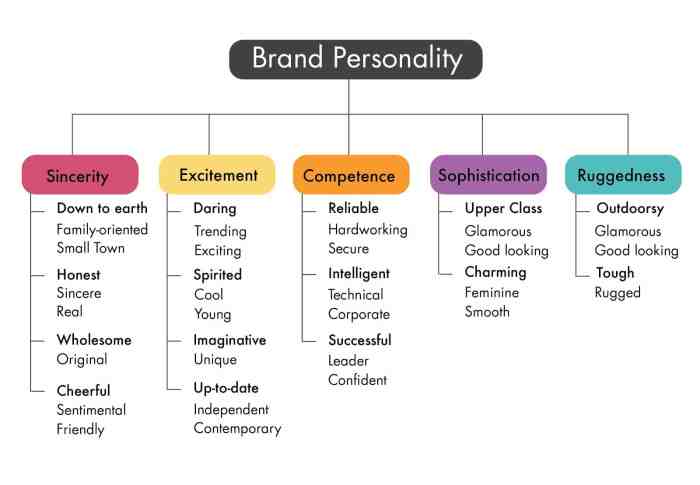Developing Brand Identity sets the stage for a company’s unique persona to shine through, showcasing how businesses stand out in a crowded market. From iconic logos to vibrant color palettes, this journey delves into the core elements that define a brand’s essence.
Exploring the strategic process of shaping a brand’s identity and implementing it seamlessly across all platforms, this narrative uncovers the power of a cohesive brand image in capturing consumer attention and loyalty.
Importance of Brand Identity
Developing a strong brand identity is essential for businesses to stand out in a crowded market, build customer loyalty, and establish a lasting connection with their target audience. A well-defined brand identity helps in creating a consistent brand experience across all touchpoints, from logo and color schemes to messaging and customer service.
Examples of Successful Companies with Strong Brand Identities
- Apple: Known for its sleek design, innovation, and user-friendly products, Apple has built a strong brand identity that resonates with consumers worldwide.
- Nike: With its iconic “swoosh” logo and powerful “Just Do It” slogan, Nike has established itself as a leading athletic brand with a strong brand identity.
- Coca-Cola: Coca-Cola’s classic red and white logo, along with its timeless branding and marketing campaigns, have solidified its position as a beloved global brand.
How Brand Identity Differentiates a Company from its Competitors
A well-crafted brand identity sets a company apart from its competitors by creating a unique personality, values, and positioning in the market. It helps consumers recognize and remember the brand, leading to increased brand loyalty and differentiation. By establishing a strong brand identity, companies can build trust, credibility, and emotional connections with their target audience, ultimately driving long-term success.
Elements of Brand Identity
In order to establish a strong brand identity, it is crucial to pay attention to key elements that contribute to shaping how a brand is perceived by its audience. Elements such as logo, color palette, typography, and brand voice play a significant role in creating a cohesive brand image that resonates with consumers.
Logo
A logo is often the first visual representation of a brand that consumers encounter. It serves as a symbol of the brand’s values, mission, and identity. A well-designed logo can communicate the essence of a brand and make it instantly recognizable to consumers.
Color Palette
Colors have the power to evoke emotions and associations, making them a vital element of brand identity. A carefully chosen color palette can convey the personality of a brand, differentiate it from competitors, and create a memorable visual impact on consumers.
Typography
Typography plays a crucial role in reinforcing brand messaging and personality. The choice of fonts, spacing, and styles can influence how consumers perceive a brand’s voice and values. Consistent use of typography across all brand communications helps to maintain a unified brand image.
Brand Voice
Brand voice refers to the tone, language, and personality that a brand uses to communicate with its audience. It helps to establish a connection with consumers and build brand loyalty. A distinct brand voice sets a brand apart from competitors and creates a consistent brand experience across all touchpoints.These elements work together harmoniously to create a cohesive brand identity that resonates with consumers, fosters brand recognition, and builds brand loyalty over time.
Developing a Brand Identity Strategy: Developing Brand Identity

In order to create a successful brand identity, a well-thought-out strategy is essential. This involves a series of steps that help shape the brand’s image and connect with the target audience effectively.
Steps in Creating a Brand Identity Strategy, Developing Brand Identity
- Conduct Market Research: Understanding the market and target audience is crucial in developing a brand identity. This helps in identifying consumer needs, preferences, and trends.
- Define Brand Values: Clearly Artikel the values and beliefs that the brand stands for. This helps in establishing a unique identity in the market.
- Create Brand Messaging: Develop a consistent message that communicates the brand’s values and benefits to the audience. This helps in building brand recognition and loyalty.
- Design Visual Elements: Create a logo, color palette, and other visual elements that represent the brand identity. These elements should be cohesive and reflect the brand’s personality.
- Implement Brand Guidelines: Establish guidelines on how the brand identity should be used across different platforms and communication channels. This ensures consistency and reinforces brand recognition.
Importance of Market Research in Shaping Brand Identity
Market research plays a crucial role in shaping a brand’s identity as it provides valuable insights into consumer behavior, preferences, and market trends. By understanding the target audience and market dynamics, brands can tailor their identity to resonate with their customers effectively.
Aligning Brand Identity with Company Values and Target Audience
- Understand Company Values: Ensure that the brand identity reflects the core values and beliefs of the company. This authenticity helps in building trust and credibility with the audience.
- Know Your Target Audience: Identify the needs, preferences, and characteristics of the target audience. By aligning the brand identity with these factors, brands can create a connection and resonate with their customers.
- Create Consistent Brand Experience: Maintain consistency in brand messaging, visual elements, and communication channels to ensure a cohesive brand experience for the audience. This helps in reinforcing brand identity and recognition.
Brand Identity Implementation

Implementing a new brand identity across various touchpoints is a crucial process that involves ensuring consistency and cohesiveness in how the brand is perceived by consumers. This process typically includes updating visual elements such as logos, color schemes, and typography, as well as refining messaging and communication strategies.
Challenges During Implementation
During the implementation phase of a new brand identity, several challenges may arise, including:
- Lack of internal alignment: Ensuring that all departments and stakeholders are on the same page and fully understand the new brand identity.
- Resistance to change: Some employees or customers may be resistant to the new brand identity, especially if they were attached to the previous one.
- Consistency across touchpoints: Maintaining consistency in the implementation of the new brand identity across all touchpoints, including digital platforms, physical stores, and marketing materials.
- Managing costs: Implementing a new brand identity can be costly, especially if it involves rebranding physical assets like signage and packaging.
Successful Brand Identity Rollouts
Several examples of successful brand identity rollouts have had a significant impact on consumer perception:
- Apple: When Apple rebranded in the late 1990s with the iconic “Think Different” campaign, it transformed the brand from a struggling computer company to a global tech giant known for innovation and design.
- Nike: Nike’s “Just Do It” campaign in the late 1980s solidified the brand’s identity as a symbol of motivation and empowerment, resonating with consumers across the globe.
- Starbucks: Starbucks’ rebranding in 2011 focused on a more streamlined logo and a renewed emphasis on sustainability, leading to increased brand loyalty and positive consumer perception.
